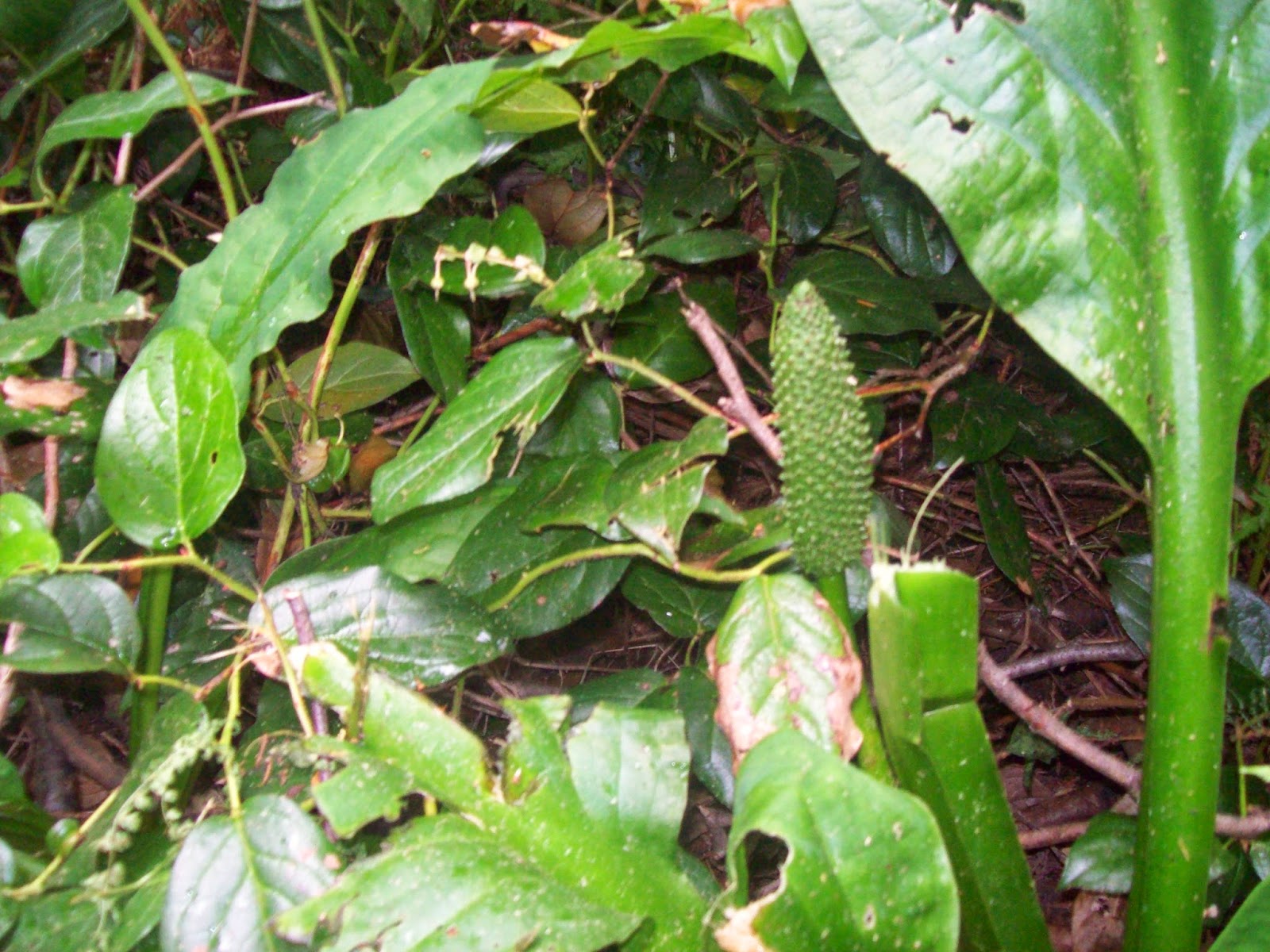Skunk cabbage in the summer is not quite as exciting as early February when the bright yellow flowers stink up the marsh, attracting their early pollinator beetles and flies. See the phallic pimply seed pod displayed in this photo. I always knew they smelled like a carcass, but I just learned the inside of the flower can generate heat up to 70 degrees - making it a thermogenic plant (although some sources say Western Skunk Cabbage is not one of these). Imagine the little beetles trekking around February's cold ground, finding way back into the heat lamp of the skunk cabbage. That sounds awfully cozy and smelly. The roots were eaten as famine food (worst case taste) and the large leaves to store berries.
I took this photo, not because you can really see what's growing but because we were told these were a bunch of wetland plants in the carrot family Apiaceae: water hemlock, water parsley and kneeling angelica. I'm always curious about the wild origins of our favorite cultivated vegetables. Kneeling angelica is a beautiful plant I see all the time I have confused with yarrow and queen anne's lace. The root has been used for headaches and their hollow stems for making drinking straws, whistles and breathing stems to remain underwater longer. We don't need all these plastic straws and snorkels!
I never really knew what this adorable plant was - Cleavers. Considered a noxious weed to some, and causing contact dermatitis for others, cleavers is in the same family as coffee and may serve as a coffee substitute with less caffeine. Apparently geese like to eat it too! this plant has been used as a blood purifier as well as a diuretic and lymphatic for swollen glands and skin problems. One study demonstrated cleavers to lower the blood pressure of dogs. Denise mentioned cleavers was traditionally used to treat HIV but I can't find any information online so far about that.
I hold Oregon Grape close to my heart. I love how abundant they are everywhere I go. I take the roots in tincture and tea form as an alterative - liver detoxing plant. I've seen it an ingredient in salves for it's antibacterial properties. This is a plant to consider in building up your body's own natural antibacterial resistance. Since plants are far more chemically compounded than pharmaceuticals, there's less chance of bacteria developing resistance to store bought creams and such. Though less powerful perhaps, I think they can be more effective long term. This blog encourages us to harvest bark rather than digging up roots to help protect the plant more. Especially important to keep in mind as more and more people turn to plants for medicine. I never thought of chewing the young leaves before but they were quite nice.
I think I've finally learned how to identify Western Hemlock. It looks like a spray of cedar needles except the branches don't curve back up to the sky and it's in the pine family. These trees help identify the more mature stands because they appear in the darker reaches of forest. It can live a long time and has been known to age over 1200 years! The young leaves, as pictured here can be enjoyably chewed or made into a bitter tea full of Vitamin C (we need as many natural sources of this as we can get!) I myself has not brushed my teeth yet and after chewing the needles felt much better.
I sit here sipping an elderberry infused red wine and I write this. Last fall I went to a workshop with herbalist Corinne Boyer of Opals Apothecary in Olympia, focused on three plants, one which was elderberry. (She writes a useful herbal newsletter called the Gathering Basket she gives away for free!) That's when I made the infused wine. Not only are the berries delicious for making liquors, wines and cordials, it has been used for treating flu, allergies and as a respiratory tonic. In Traditional Chinese Medicine it's used for treating rheumatism. Their branches have been made into flutes. A plant pleasing to both the palette and the ear.
Oh what a good it was! So much to learn.










.jpg)
No comments:
Post a Comment